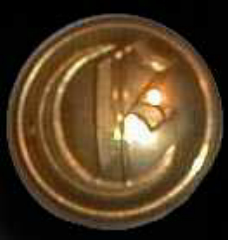
The Confederacy established a Corps of Engineers commanded by five different Chiefs during the war: Brig. Generals Josiah Gorgas and Danville Leadbetter, Colonel Alfred L. Rives, and Major Generals Jeremy F. Gilmer and Martin L. Smith. Fortunately, the Confederate Engineers obtained the services of trained Officers who had resigned from the U.S. Army, but they lacked equipment and maps when the war began. Equipment was purchased from foreign countries, captured from the enemy, and manufactured in the South, but deficiencies continued throughout the war. Among other duties, Engineer Officers energetically prepared maps that were quickly distributed to the various army commands. The Confederacy also organized Engineer troops and hired hundreds of civilians and slaves to work on fortifications, roads, and bridges. Since Army Engineers were not permanently garrisoned on the frontier, it was necessary to send out small detachments whenever their services were needed. In addition to the regular surveying and mapping duties, Engineers were called upon to locate possible sites for forts and routes for roads and railroads. A detachment would typically consist of one or two Engineers, two Engineer Sergeants and several non-rated enlisted men, sometimes pulled from the ranks of other branches. Chiefs of the Army Engineers Bureau (subordinated to Secretary of War) Apr 08 1861 - Aug 03 1861 Lt. Col. Josiah Gorgas (acting, later Brig. Gen.) Aug 03 1861 - Nov 10 1861 Maj. Danville Leadbetter (acting, later Brig. Gen.) Nov 13 1861 - Sep 24 1862 Lt. Col. Alfred L. Rives (acting, 1st time) Sep 25 1862 - Aug 17 1863 Lt. Col. Jeremy F. Gilmer (1st time) Aug 18 1863 - Mar 09 1864 Col. Alfred L. Rives (acting) Mar 09 1864 - Apr 1864 Maj. Gen. Martin L. Smith Apr 1864 - Jun 1864 Col. Alfred L. Rives (acting, 2nd time) Jun 1864 - Apr 1865 Maj. Gen. Jeremy F. Gilmer (2nd time) 1st Engineers Battalion was organized during the winter of 1863 - 1864 with four companies. Its members were from Arkansas, Texas, Louisiana, and Missouri. Serving in the Trans-Mississippi Department, two companies were stationed in the Galveston area and two were involved in Priceís Missouri Expedition. The two at Galveston were included in the surrender in June, 1865, but the two that served with General Price appear to have disbanded near Shreveport, Louisiana. Lieutenant Colonel Hugh T. Douglas and Major R. P. Rowley were in command. 1st Engineers Regiment was organized at Richmond, Virginia, during the fall of 1863 with men from North Carolina and Virginia. In December about 250 of these men were repairing roads in the Richmond area. Later the unit served as prison guards, then repaired railroads and bridges. During the winter of 1864 - 1865 it built Bevillís Bridge over the Appomattox River about twenty-five miles above Petersburg and sent a pontoon bridge to the Richmond and Danville Railroad Crossing of the Staunton River. In preparation for the spring campaign, it readied another pontoon bridge for use at the site of the roads from Richmond and Petersburg to the several crossings ot the Appomattox. The unit last 2 men killed and 28 wounded during the war, and when the Army of Northern Virginia surrendered 233 were present. Its commanders were Colonel Thomas M. R. Talcott, Lieutenant Colonel William W. Blackford, and Major Peyton Randolph. 2nd Engineers Regiment was assembled during the summer of 1863 with men from almost every Confederate state east of the Mississippi River. This regiment did not serve as one command. Companies A and E were stationed at Fort Fisher, North Carolina; Companies B, F, and I were at Forts Gaines and Morgan, Alabama; Company D (The Unit that we Portray) was at Fort McAllister, Georgia; and Companies C, G, H, and K were with the forces in Virginia. These four companies, for the most part, served under Colonel T. M. R. Talcott of the 1st Engineers Regiment. The companies surrendered with the army or department in which they served, and those with the Army of Nothern Virginia totalled 97 officers and men. Major D. Wintter was in command. 3rd Engineers Regiment was formed in the summer of 1863 using Presstmanís Confederate Engineers Battalion as its nucleus. The unit contained men from Virginia, North Carolina, Kentucky, and Tennessee. It seems the regiment had only eight companies; seven were involved in the Atlanta Campaign and Hoodís Tennessee operations, and one moved with Early to the Shenandoah Valley. Later six companies were in North Carolina and surrendered with the Army of Tennessee. Two fought at Waynesborough, Virginia, and disbanded during the spring of 1865. Lieutenant Colonel S. W. Presstman and Major John W. Green were in command.